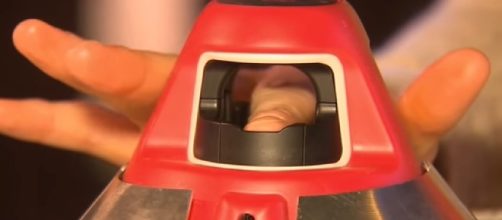The trend toward the use of biometrics is increasing more and more every year. In a giant leap for the industry this month, for the first time ever, a customer has made a payment using only the vein pattern in their Finger. The payment was made in a Costcutter store, on the campus of Brunel University in London. According to the Telegraph newspaper, the company who provided the technology, Sthaler, are negotiating use of the technology with other large supermarkets in the UK. It is not just the finger pattern that is checked by the technology. The commercial director of Sthaler, Simon Binns, told the newspaper "When you put your finger in the scanner it checks you are alive, it checks for a pulse, it checks for haemoglobin." To many people unfamiliar with the technology, which is most of us, an obvious question arises: how does this information link to your bank details?
How the technology works
In an interview with the BBC, CEO of Sthaler Nicholas Dryden explained how the technology works. An infrared light is used to create a detailed map of the veins in the shopper's finger, this takes around three seconds. Interestingly, the chances of another person having the same vein pattern as you is one in three billion. You then link your finger vein pattern to whichever payment type you want such as a bank card or a PayPal account. These details are then stored with Worldpay. You can then use your finger to pay again and it will recognise the pattern and which account to debit the money from.
Why this is such a leap
In May of this year, months before the supermarket trial had been successful, Nicholas had explained the importance of the trial in an interview with Sky News: "What they are looking at is replacing a loyalty card, a membership card, and that becomes your finger." As each finger is unique also, different cards or payment types could be stored on different fingers.
No card details are stored with the retailer or with Sthaler, but with Worldpay.
A taste of things to come
This success is just the latest in an increasing trend towards a World of biometric-oriented security. We can soon expect to be living in a world where your facial structure, finger vein pattern or iris are how you get through airport security, sign in to work, and now even pay for your groceries.
It will surely make for a more secure world, but also one in which our every move is traceable and our identity information will be held by corporations. While the data held will be extremely secure, there will undoubtedly be many people worried about this idea. Whether shoppers will be willing to place this information in the hands of others, we will soon see.

